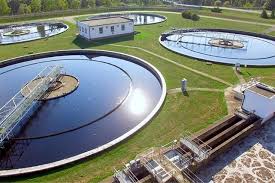Introduction
Water treatment plant have a critical role in managing the world’s water resources. By purifying water for drinking, industrial use, and safe discharge into natural ecosystems, these plant help protect both human health and the environment. With advances in technology, water treatment plant are increasingly adopting new methods to improve efficiency, address emerging contaminants, and reduce their environmental impact. This article explores some of the groundbreaking innovations currently shaping the future of water treatment plant.
1. Membrane Filtration Technologies
Membrane filtration has become one of the most effective tools in water treatment. Using a semi-permeable membrane, this technology filters out bacteria, viruses, and other contaminants, providing a high level of purity.
- Microfiltration and Ultrafiltration: These technologies remove particles and pathogens from water using tiny pores in the membrane. Microfiltration targets larger particles, while ultrafiltration targets smaller ones, offering two layers of defense.
- Reverse Osmosis (RO): RO filtration is widely used for desalination, particularly in regions with limited freshwater sources. This method removes ions and dissolved salts, transforming seawater into potable water.
2. Artificial Intelligence (AI) and Machine Learning
AI and machine learning are increasingly used in water treatment plant to improve operational efficiency and optimize maintenance schedules. These systems can monitor real-time data, make predictive analyses, and even alert operators of potential issues.
- Predictive Maintenance: AI algorithms can predict when equipment might fail, allowing for preventive maintenance that reduces downtime and repair costs.
- Operational Efficiency: AI tools monitor water quality data and adjust treatment processes to optimize energy consumption and chemical use, reducing operational costs.
3. Advanced Oxidation Processes (AOPs)
Advanced Oxidation Processes (AOPs) utilize powerful oxidants, such as ozone, hydrogen peroxide, and UV light, to degrade and neutralize contaminants. AOPs are highly effective for treating industrial wastewater, which often contains chemicals that conventional methods struggle to address.
- Hydroxyl Radical Oxidation: Hydroxyl radicals are extremely reactive and can degrade complex organic pollutants, making them suitable for treating pharmaceutical waste and other challenging pollutants.
- Electrochemical Oxidation: This emerging technology generates oxidants directly in wastewater, breaking down contaminants and reducing the need for additional chemicals.
4. Decentralized Treatment Solutions
Decentralized treatment systems are smaller, modular treatment units that can be installed closer to the point of water use or discharge. These systems reduce the need for large infrastructure and are especially useful in remote or fast-growing areas.
- Portable Treatment Units: Designed for emergency response or remote locations, portable water treatment units are compact and efficient, providing safe drinking water where traditional plant may not be feasible.
- Community-Level Systems: Decentralized systems are increasingly used in community water supplies, especially in regions with water scarcity. By treating water locally, these systems help conserve water and reduce transportation costs.
5. Renewable Energy Integration
To reduce their carbon footprint, water treatment plant are increasingly integrating renewable energy sources such as solar, wind, and biogas.
- Solar-Powered Treatment Plant: Solar energy is ideal for water treatment facilities in sunny climates, reducing their reliance on grid electricity and lowering operational costs.
- Biogas from Sludge: Some water treatment plant convert organic sludge into biogas, which can then be used to power treatment operations, offering both waste management and renewable energy solutions.
6. Biological Treatment Innovations
Biological treatment methods use microorganisms to break down organic matter in wastewater, making them highly effective for managing industrial and municipal waste.
- Aerobic and Anaerobic Systems: Traditional systems like activated sludge are now enhanced with newer technologies, such as membrane bioreactors (MBRs), which combine biological treatment with membrane filtration for improved efficiency.
- Biofilm Reactors: These reactors encourage bacteria to grow on a surface, where they break down contaminants in the wastewater. Biofilm systems are especially effective for treating wastewater with high organic loads.
Conclusion
Technological advancements are transforming the way water treatment plant operate. From AI-driven predictive maintenance to decentralized treatment units and renewable energy integration, these innovations are helping treatment plant become more efficient, resilient, and environmentally friendly. By embracing these advancements, water treatment plant can better meet the growing demand for clean water while protecting our planet’s precious resources.




